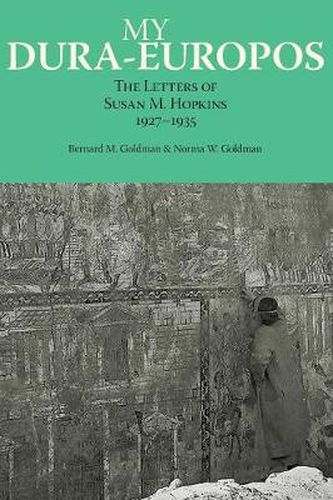Readings Newsletter
Become a Readings Member to make your shopping experience even easier.
Sign in or sign up for free!
You’re not far away from qualifying for FREE standard shipping within Australia
You’ve qualified for FREE standard shipping within Australia
The cart is loading…






This title is printed to order. This book may have been self-published. If so, we cannot guarantee the quality of the content. In the main most books will have gone through the editing process however some may not. We therefore suggest that you be aware of this before ordering this book. If in doubt check either the author or publisher’s details as we are unable to accept any returns unless they are faulty. Please contact us if you have any questions.
Dura-Europos, founded by the Greeks in 300 BCE, became a remote outpost of the Roman Empire in western Asia until it was finally destroyed by a Persian army in the third century CE. It lay buried until it was rediscovered by British troops in the aftermath of World War I, at which time its intact religious sites, military equipment, tombs, and wall decorations were all excavated. In My Dura-Europos: The Letters of Susan M. Hopkins, 1927-1935, authors Bernard M. Goldman and Norma W. Goldman collect and contextualize the correspondence of Susan Hopkins, who accompanied her husband, Clark Hopkins, to the archaeological dig at Dura-Europos, which was one of the most significant of the twentieth century.
From a very personal female viewpoint, My Dura-Europos describes life at the remote excavation from the first season in 1928, when Susan and Clark were neophyte archaeologists, to 1935 when the project concluded. Susan writes of cataloging the finds, mending pottery, and acting as epigrapher by translating the inscriptions and dating the coins. In addition to these roles, Susan was assigned responsibility for organizing many of the day-to-day aspects of life in the camp, and later letters even describe her life as a mother in 1933-35, when she brought her young daughter along to the excavations. Susan’s lively, personal letters are organized and annotated by Bernard Goldman, whose deep knowledge of the sites and general history of archaeology and the region allows for a vivid and helpful commentary.
After Bernard Goldman’s death, his wife, Norma Goldman, completed the manuscript and added over two hundred rare illustrations of the site and the archaeologists involved. Readers interested in archaeology and the history of the classical world will enjoy this fascinating inside look at life on the Dura-Europos site.
$9.00 standard shipping within Australia
FREE standard shipping within Australia for orders over $100.00
Express & International shipping calculated at checkout
This title is printed to order. This book may have been self-published. If so, we cannot guarantee the quality of the content. In the main most books will have gone through the editing process however some may not. We therefore suggest that you be aware of this before ordering this book. If in doubt check either the author or publisher’s details as we are unable to accept any returns unless they are faulty. Please contact us if you have any questions.
Dura-Europos, founded by the Greeks in 300 BCE, became a remote outpost of the Roman Empire in western Asia until it was finally destroyed by a Persian army in the third century CE. It lay buried until it was rediscovered by British troops in the aftermath of World War I, at which time its intact religious sites, military equipment, tombs, and wall decorations were all excavated. In My Dura-Europos: The Letters of Susan M. Hopkins, 1927-1935, authors Bernard M. Goldman and Norma W. Goldman collect and contextualize the correspondence of Susan Hopkins, who accompanied her husband, Clark Hopkins, to the archaeological dig at Dura-Europos, which was one of the most significant of the twentieth century.
From a very personal female viewpoint, My Dura-Europos describes life at the remote excavation from the first season in 1928, when Susan and Clark were neophyte archaeologists, to 1935 when the project concluded. Susan writes of cataloging the finds, mending pottery, and acting as epigrapher by translating the inscriptions and dating the coins. In addition to these roles, Susan was assigned responsibility for organizing many of the day-to-day aspects of life in the camp, and later letters even describe her life as a mother in 1933-35, when she brought her young daughter along to the excavations. Susan’s lively, personal letters are organized and annotated by Bernard Goldman, whose deep knowledge of the sites and general history of archaeology and the region allows for a vivid and helpful commentary.
After Bernard Goldman’s death, his wife, Norma Goldman, completed the manuscript and added over two hundred rare illustrations of the site and the archaeologists involved. Readers interested in archaeology and the history of the classical world will enjoy this fascinating inside look at life on the Dura-Europos site.